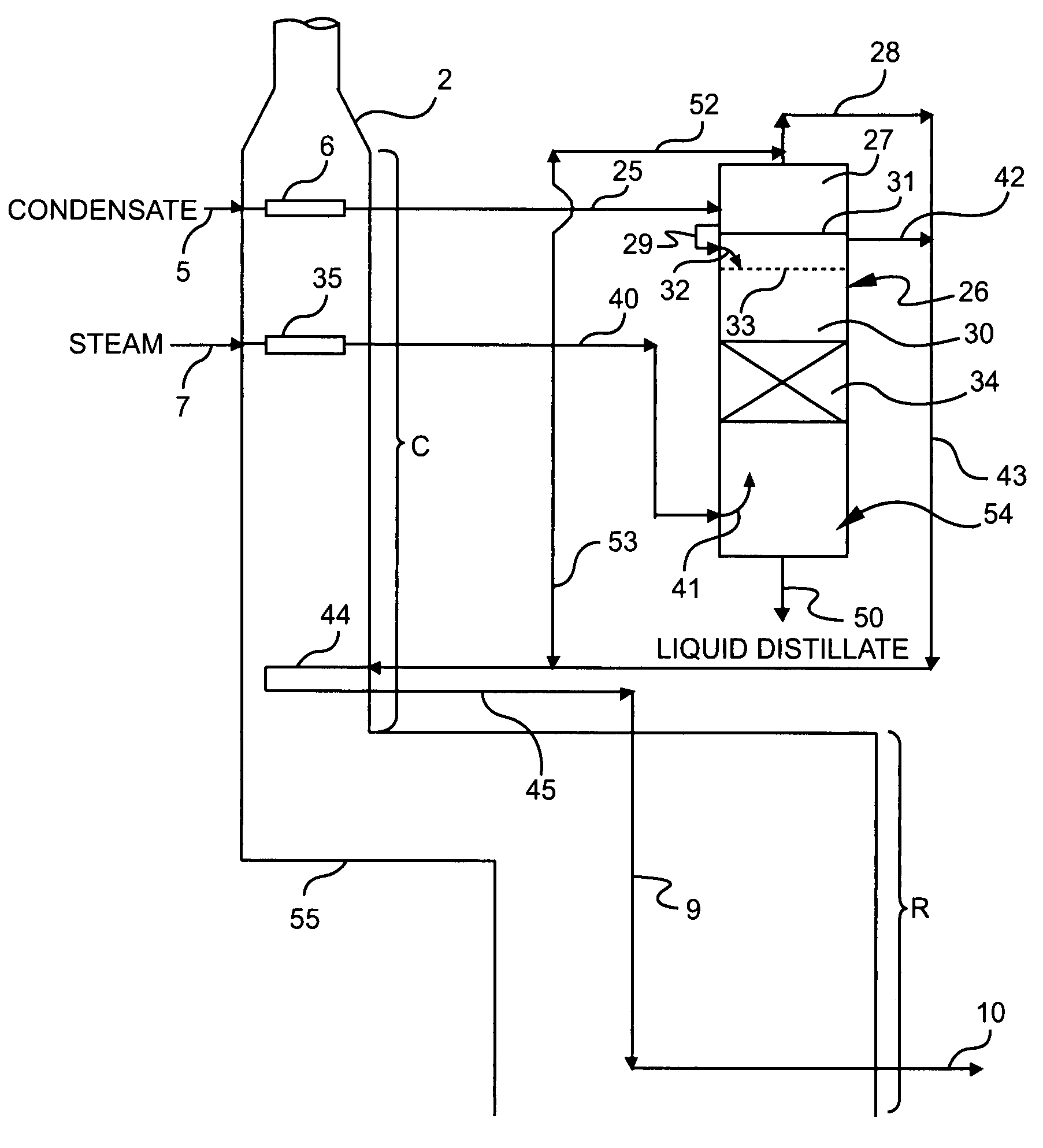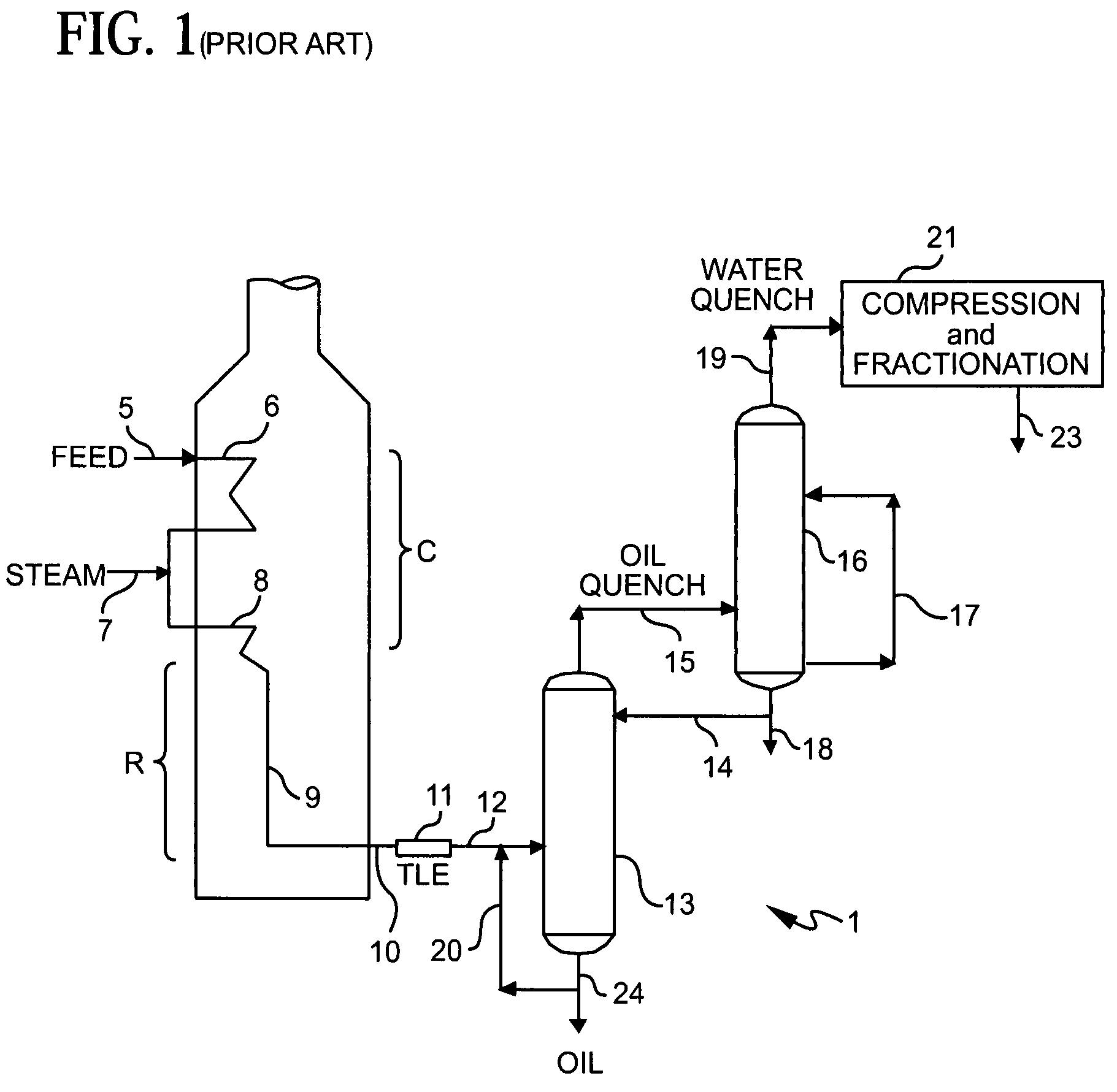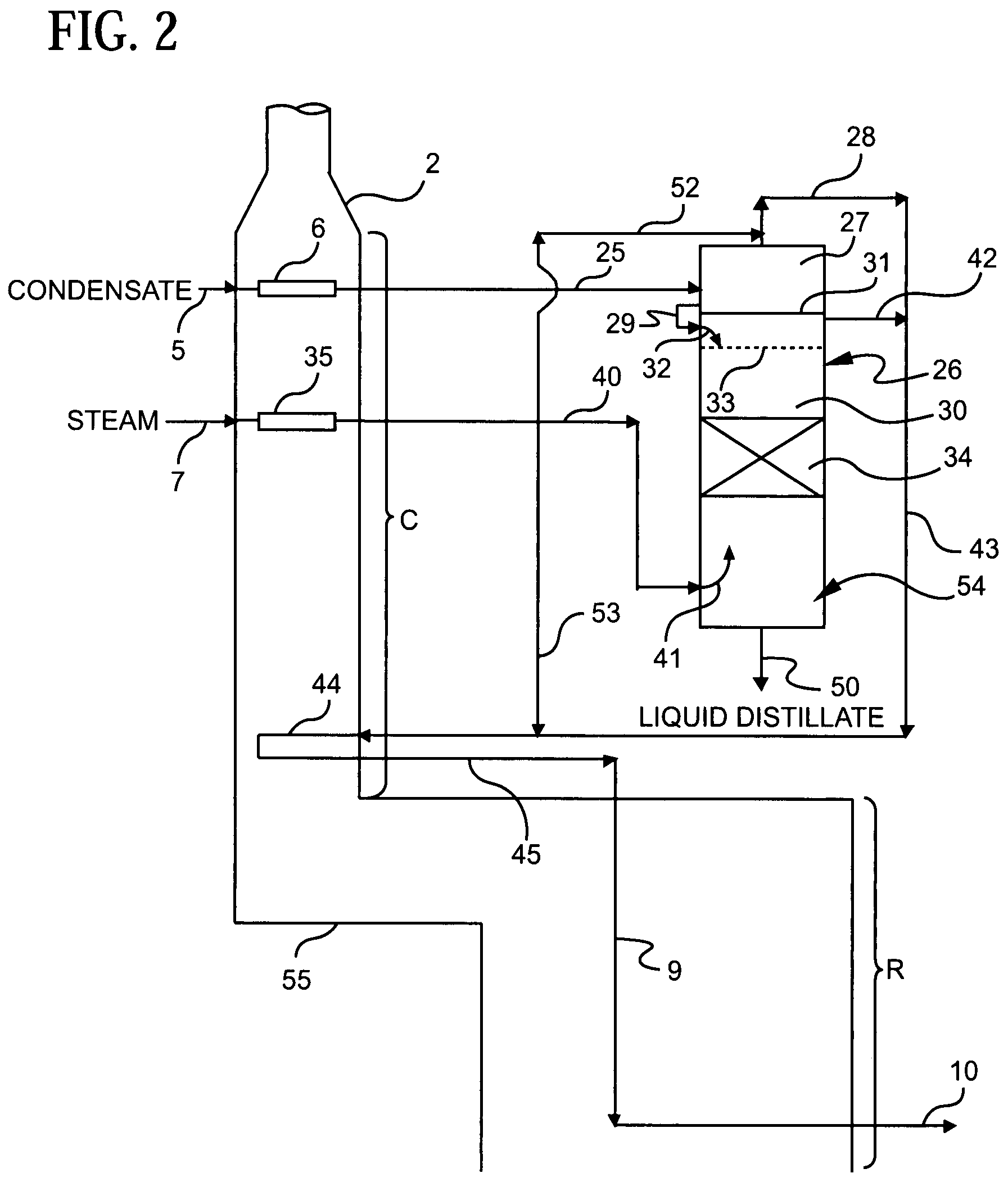Olefin production utilizing a feed containing condensate and crude oil
a technology of crude oil and condensate, which is applied in the direction of hydrocarbon oil treatment products, effluent separation, separation processes, etc., can solve the problems of high cost, large capital investment, and difficulty in providing a boiling range for whole crude oil
- Summary
- Abstract
- Description
- Claims
- Application Information
AI Technical Summary
Benefits of technology
Problems solved by technology
Method used
Image
Examples
example
[0076]A feed 5 containing Oso condensate (obtained from Nigeria) mixed with crude oil (the feed contains 5 wt. % heavy hydrocarbons boiling at >900° F. at atmospheric pressure), is removed from a storage tank and fed directly into the convection section of a pyrolysis furnace 2 at ambient conditions of temperature and pressure. In the convection section the feed is preheated to about 300° F. at about 60 psig, and then passed into a vaporization unit 26 wherein a mixture of gasoline and naphtha components at about 300° F. and 60 psig are separated from liquid hydrocarbons in zone 27 of that unit. The separated gases are removed from zone 27 for transfer to the radiant section of the same furnace for severe cracking in a temperature range of 1,450° F. to 1,550° F. at the outlet of radiant coil 9.
[0077]The liquid hydrocarbons remaining from feed 5, after separation from accompanying hydrocarbon gases aforesaid, is transferred to lower section 30 and allowed to fall downwardly in that s...
PUM
| Property | Measurement | Unit |
|---|---|---|
| pressure | aaaaa | aaaaa |
| temperature | aaaaa | aaaaa |
| temperature | aaaaa | aaaaa |
Abstract
Description
Claims
Application Information
 Login to View More
Login to View More - R&D
- Intellectual Property
- Life Sciences
- Materials
- Tech Scout
- Unparalleled Data Quality
- Higher Quality Content
- 60% Fewer Hallucinations
Browse by: Latest US Patents, China's latest patents, Technical Efficacy Thesaurus, Application Domain, Technology Topic, Popular Technical Reports.
© 2025 PatSnap. All rights reserved.Legal|Privacy policy|Modern Slavery Act Transparency Statement|Sitemap|About US| Contact US: help@patsnap.com



